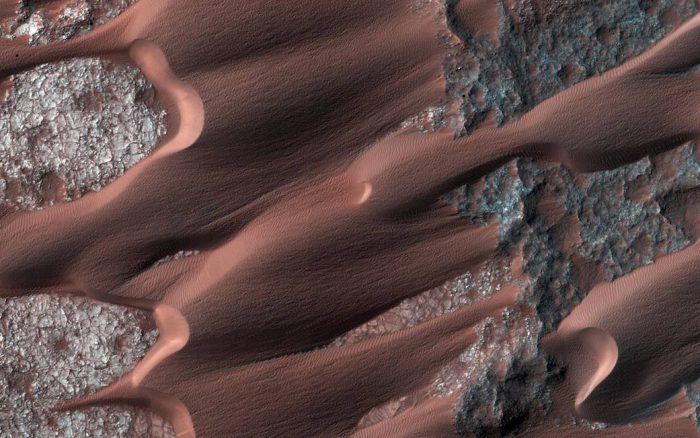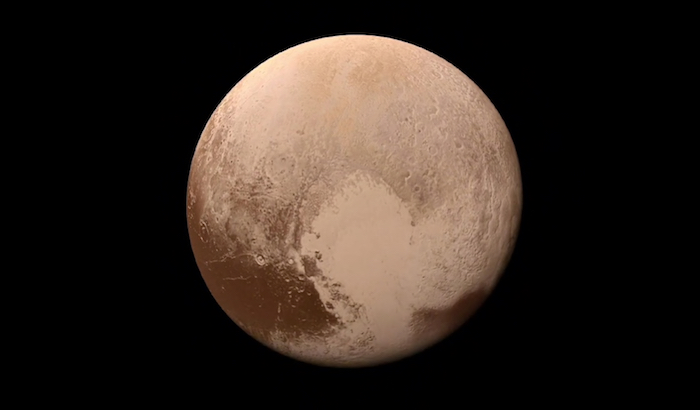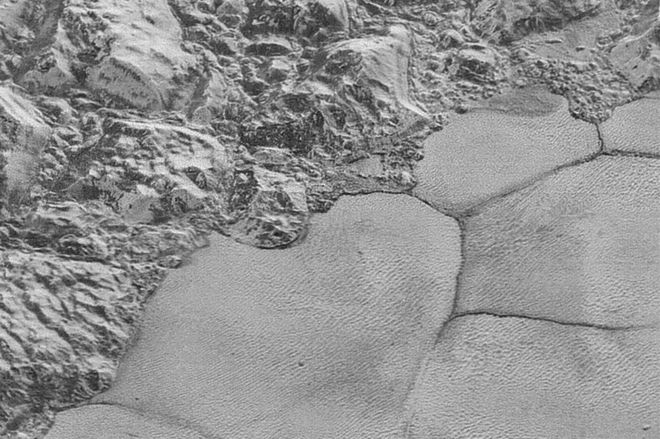Few celestial bodies in our solar system can take a licking and keep on ticking like Pluto.
After it lost its official planet status in 2006, you might have thought that this distant rock's reputation was in trouble. Nope! Instead, thanks to a series of discoveries made by the New Horizons spacecraft, Pluto has proven that you don't need to be a planet to be worth a visit.
The latest example: evidence of methane dunes on its surface. They are found on an area of the dwarf planet known as Sputnik Planitia (say: s-PUT-nick plah-NISH-ee-ah). These features are similar to sand dunes found on Earth, except that in the case, the dunes are made of tiny particles of frozen methane.
Catch wind of it

A dune field on Mars. Scientists use satellites around Mars to watch how the dunes change over time. Will we one day be able to do the same for Pluto? (NASA/JPL-Caltech/Univ. of Arizona)
So let's say that you're not exactly sure why this is that big a deal. After all, there are dunes on Mars, too, and people aren't exactly losing their minds over it (well, some people are, but you get the point). It all boils down to the one thing that you need to have dunes.
Wind!
Without wind to blow around fine particles—such as sand or methane ice—no dunes will form. Prior to this discovery, scientists didn't think that Pluto had enough of an atmosphere to have much wind at all. For comparison, Pluto is about 70% the size of the Moon, which has next to no atmosphere. (That's why footprints left on the Moon almost fifty years ago look like they made only yesterday.) Has Pluto managed to hold on to enough atmosphere to have an affect on its surface? It appears so!
More active than we thought

The dunes are located in a large, light-coloured area called Sputnik Planitia, which is also known as "Pluto's Heart". (NASA)
So, New Horizons has shown Pluto to be a much more active planet than we once thought. It is covered in nitrogen ice glaciers and strange pits, and its surface varies from place to place. And now we have found features that most likely require forces such as wind to be formed. Exciting!
For now, no one can confirm exactly how the wind was created or how regularly it occurs there. It's all still a theory. But scientists do believe that it happened in the dwarf planet's recent geological past.
Neat-o, Pluto! We always knew that you were up to something way out there!
 Are these waves on the surface of Pluto dunes of windblown methane ice particles? (NASA/JUHAPL/SWRI)
Are these waves on the surface of Pluto dunes of windblown methane ice particles? (NASA/JUHAPL/SWRI)









